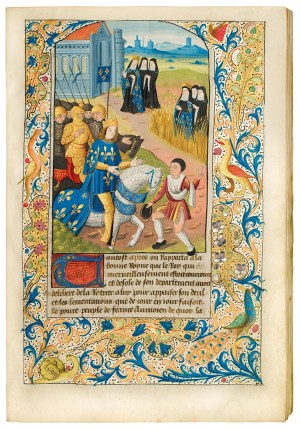Head of a youth (fragment) (first century), Roman copy of an original attributed to Polykleitos. Kallos Gallery (£120,000)

With some art fairs opting for hybrid events this autumn, the European Fine Art Foundation (TEFAF) has decided to play it safe with a second online edition (9–13 September), following the success of the first TEFAF Online last November. Perhaps recognising that its digital platform will remain valuable when the physical event returns (in March and May 2022, in Maastricht and New York respectively), the fair has expanded its online programme since last year, when exhibitors were encouraged to present just one object. Participants may now show three works, retaining the discerning focus trialled in 2020 but meaning that online visitors will be able to explore more than 700 objects presented by some 255 dealers. Writ large will be the fair’s trademark breadth, spanning thousands of years of art history; works offered range from a marble head fragment, an imperial Roman copy of a work attributed to Polykleitos (Kallos Gallery), to a carved alabaster self-portrait by Marina Abramovic from her Seven Deaths: The Snake series (2020–21; Lisson Gallery).
A specialist in European Old Masters, Adam Williams was at the inaugural TEFAF Maastricht in 1975. He remains keen to support TEFAF and feels that the online event is his best hope of keeping in touch with important clients. ‘We are doing some business in America but Maastricht is my one chance to sell to Europeans and European museums, and we usually do,’ he says. Recognising that collectors are wary of buying Old Masters online, since condition is hard to gauge from digital images, he has chosen three Italian baroque paintings, including a striking chiaroscuro portrait of a man writing by candlelight by Pietro Paolini, which he also hopes to exhibit at his New York gallery.
Page from the Life of St Radegund (c. 1496–98), Jean Bouchet, illuminated by the Master of St Radegund. illuminated by the Master of St Radegund

If presenting paintings online can be difficult, the format is all the more challenging in the case of books. ‘Digital images can give a sense of the pictures that are inside, but really don’t give the feeling of the book itself,’ says Erin Donovan of Dr. Jörn Günther Rare Books. ‘It’s a three-dimensional work that has a smell, a sound and a sense of its age that you can feel when holding it in your hands.’ Thankfully, the gallery has prepared the next best thing, having produced detailed videos for its YouTube channel since 2017. These will be used to share three books of royal provenance, including a ‘Princes’ edition’ of the Theuerdank (1517), commissioned by Holy Roman Emperor Maximilian I as a romantic retelling of his marriage to Mary of Burgundy, and the Life of St Radegund, a manuscript made for Charles VIII of France in the late 15th century – vibrantly aligning his commitment to France with that of the sixth-century saint.
Timo Koopman of Koopman Rare Art, meanwhile, is excited to be presenting a large James I parcel-gilt beaker with finely engraved flower and scroll ornaments, and a pair of silver-gilt wine coolers from 1809 bearing scenes of the triumph of Bacchus in richly elaborate relief. Details such as these will be captured by videos that show the pieces up close and in rotation, accompanied by in-depth historical information. When the gallery exhibited last year, Koopman was pleased to find visitors getting in touch with questions, which led to further enquiries. ‘TEFAF is superb,’ he says. ‘That’s why it’s important to be involved with this and show the public how many of these wonderful things are still being located, even in difficult times.’
From the September 2021 issue of Apollo. Preview and subscribe here.



